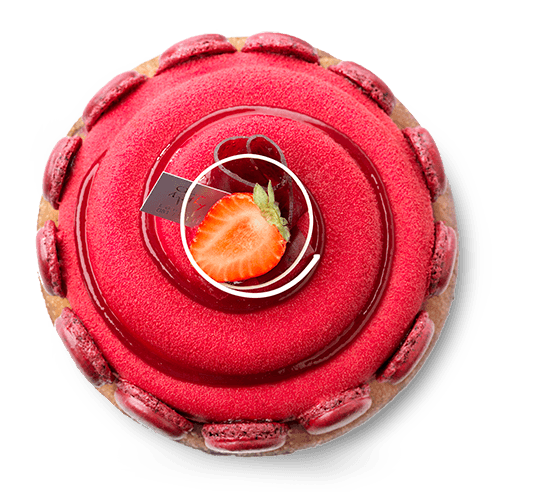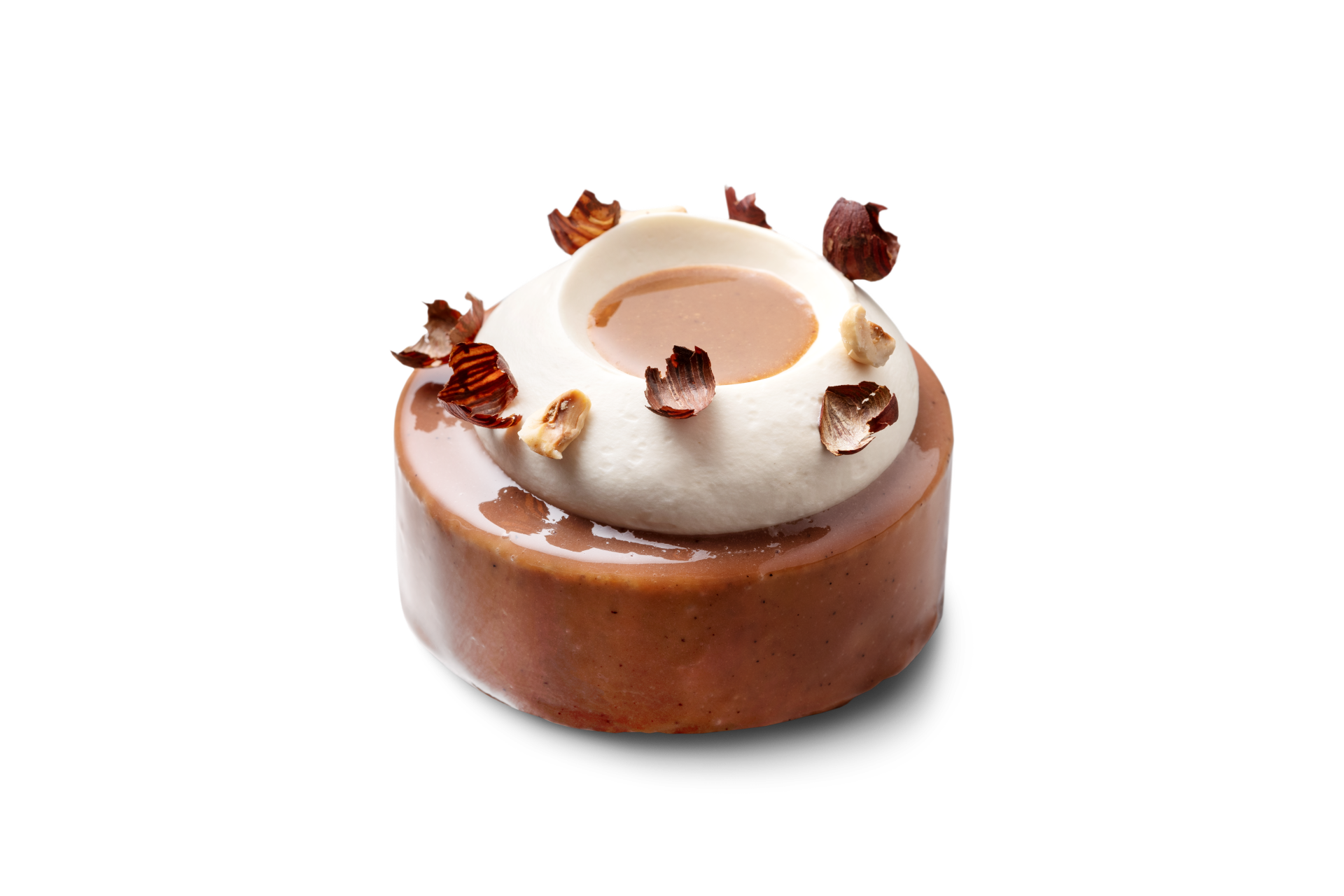Cooking with dairy products from the family farm
In the border region between the Dutch provinces of Friesland and Overijssel is the Weerribben-Wieden National Park, the largest contiguous low peat swamp in northwestern Europe. Just above it is Wolvega, the home of brothers Jan and Frans Smink. One is a Michelin-starred chef, while the other is a dairy farmer. Together, they are exploring ways to link their work to their unique location in a sustainable manner.

If dairy farmer Frans Smink had the choice, he would rather have a kebab than eat at his brother Jan's restaurant. ‘A Michelin star? That means nothing to me. It’s not really my thing. The food he cooks is absolutely delicious... it's just not for me.’ His brother Jan Smink, who has owned restaurant and catering company Smink in Wolvega since September 2018, laughs when he hears that. ‘Each to his own, right? Some people prefer a big piece of meat on their plate with a bowl of potatoes on the side. I would say that’s fine! Everyone is welcome here. You can come in wearing clogs, in your shorts, or dressed up in a suit. Everyone is welcome to feel at home here and we try to treat all our guests the same. In the end, I will always be just Jan from the farm!’
Running a farm
Frans and Jan's grandfather was a dairy farmer in Amsterdam, but he moved to Friesland in the 1970s to start a farm there. The farm was taken over by his son and later by his grandson Frans. ‘I did try other things, but I didn’t really enjoy any of them,’ Frans says. ‘Home was always a lovely place. I got on well with my parents, and from the age of fourteen, I really got involved in the farm. So the decision to run the farm was easy; it felt perfectly natural for me to stay here.’
Jan Smink had a different perspective. ‘I liked the farm and did help with milking sometimes, but it did not really catch my interest. In fact, what I found most enjoyable was driving the tractor! When I was fifteen, I got an opportunity to work outside the home through a local employment agency, and I jumped at the chance. I helped with washing up at a nearby restaurant. Once I was there, to my surprise, I soon ended up in the kitchen helping to make the starters. I had done some cooking at home and sometimes helped my mother with baking, but I really didn't know at a young age that I wanted to be a chef. Still, working in the kitchen really appealed to me. When it was time to choose my own path, it was clear that I wanted to go to cookery school.’
Jan Smink has won several national and international awards in recent years, including the Bocuse d'Or Netherlands and Le Taittinger Prix Culinaire International. He has worked at Bilderberg Landgoed in Lauswolt and at the three-star restaurant De Librije in Zwolle, among other places. In 2023, he was awarded a Michelin star for his own work. ‘What is the Smink way of cooking? I go for local and honest products, which are usually organic. We have our own pick-your-own farm and forest garden, and I use a lot of the produce from my brother’s farm. In the end, though, quality always comes first. For example, we have pigeon on the menu and I could shoot one right off the roof here. But the best pigeon still comes from France. That’s our priority: quality always wins. That is the Smink way of cooking.’
One unusual product Jan likes to collect from his brother's farm is bovine colostrum, which is the first milk a cow gives after calving. Jan discovered by chance that he could use this in his own kitchen. ‘I took it from the farm and started experimenting with it at home. I drank it raw and put it in coffee. I also put some in a bag in the oven. The milk from the first 12 hours made me ill! It contains so much fat and protein that only a newborn calf can tolerate it. However, the colostrum from 12 to 24 hours is a very useful product. Colostrum older than this is closer to regular milk. In fact, I only use the colostrum that is not needed by the calf because the mother is producing more than enough. So what I do is sustainable. Otherwise, the colostrum would be thrown away; it definitely cannot go into the milk tank.’
Jan is one of the first people in the Netherlands to cook with bovine colostrum. He pasteurizes it in a thermoblender and, due to its high protein content, hardly needs to add any binders such as egg or gelatin to turn it into a cream. ‘We prepare all kinds of desserts from it: cream, ice cream, baked milk skin, an espuma, a pancake, you name it. Now everyone who eats here is given a waffle cone between their main course and dessert, which is baked using my mother’s recipe. The cone is served in a real cow horn and is filled with a cream made from colostrum, which I whisk up with vanilla and a little honey. I might combine that with yuzu, popcorn, a spice, or mascarpone, for example, depending on the season.’
If it were up to Jan, he would work with his brother Frans and his farm in Wolvega a lot more. ‘I think it's great that Frans has the guts to continue working on this farm, where our father and grandfather always worked as well. I am glad that, even with the changing times and sometimes very difficult laws and regulations, it is still the Smink family farm. I admire his courage to do this in his own way.’
After their father’s departure, Frans modernized several aspects of the farm. ‘My father was still doing everything with a spade and a wheelbarrow. Within a month, I bought a mini shovel machine. I also changed the way we manage the calves and installed a wind turbine. My father did not address those things because they cost a huge amount of money. In the end, you have to do it though, if you want the farm to be future-proof.’ Frans generates energy day and night using the EAZ wind turbine. ‘Here in the Frisian countryside, an EAZ wind turbine is always spinning. During the day, when the cows are outside, I hardly need any electricity at all. The manure pusher isn’t running and the well water is not needed either. When the cows are in the barn, it’s a different story. However, with our wind turbine, it’s not an issue.’
Sustainable
Frans prefers full grazing for his cows, and they grazed outside for almost 1,800 hours in 2023. ‘I am also actively involved in grassland bird management. There are some fields I don't mow before June 15, and I make sure I leave pools of water for the grassland birds. I am also working on animal-friendly riverbanks.’ Frans is also trying to make his cows more resilient so that they live longer and can spend even more time outside. ‘In summer, they have to make do with the pasture. To achieve that, I need a resilient herd, so the cows can go on for years. That’s better for the cows and for me too.’
Jan loves the fact that the milk from his brother's 120 or so cows is collected by FrieslandCampina, which means it ends up in the butter and cream of Debic he uses in his kitchen. ‘Ideally, I would also get all my meat from Frans as well. Because then I would know where the cows have been walking around. In addition, I process the whole animal: from head to tail. How much sustainability do you want? These days, everyone is talking about eating less meat and dairy products. At the same time, though, people only want a steak or tenderloin if it comes from Argentina. Or else they want tuna and avocados. We export most of our meat from the Netherlands, but then we get our beef from Ireland. Do you see the paradox? Wanting to live and eat more sustainably is a good thing. At the same time, though, we need to think carefully about how we can actually do that. As a farmer's son, I will always be an ambassador for meat and dairy products.’
Find out how Jan uses Debic products in his creations.

Check Jan Smink's journey from farmer to Michelin star.
Discover more






